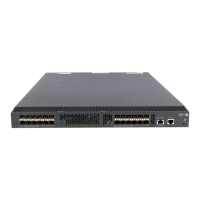user-fqdn user-fqdn-name : Uses the user FQDN name as the identity. The user-fqdn-name argument is a
case-sensitive string of 1 to 255 characters, for example, abc@test.com. If you do not specify this
argument, the device name configured by using the sysname command is used as the user FQDN.
Usage guidelines
The global identity can be used by the device for all IKE SA negotiations, and the local identity (set by
the local-identity command) can be used only by the device that uses the IKE profile.
In pre-shared key authentication, you cannot set the DN as the identity.
In signature authentication:
• You can set any type of the identity information.
• The ike signature-identity from-certificate command sets the local device to always use the identity
information obtained from the local certificate.
• If the ike signature-identity from-certificate command is not set, the local-identity command
configuration, if configured, takes precedence over the ike identity command configuration.
Examples
# Set the IP address 2.2.2.2 as the identity.
<sysname> system-view
[sysname] ike identity address 2.2.2.2
Related commands
• local-identity
• ike signature-identity from-certificate
ike invalid-spi-recovery enable
Use ike invalid-spi-recovery enable to enable invalid security parameter index (SPI) recovery.
Use undo ike invalid-spi-recovery enable to restore the default.
Syntax
ike invalid-spi-recovery enable
undo ike invalid-spi-recovery enable
Default
SPI recovery is disabled.
Views
System view
Predefined user roles
network-admin
Usage guidelines
IPsec "black hole" occurs when one IPsec peer fails (for example, a peer can fail if a reboot occurs). One
peer fails and loses its SAs with the other peer. When an IPsec peer receives a data packet for which it
379

